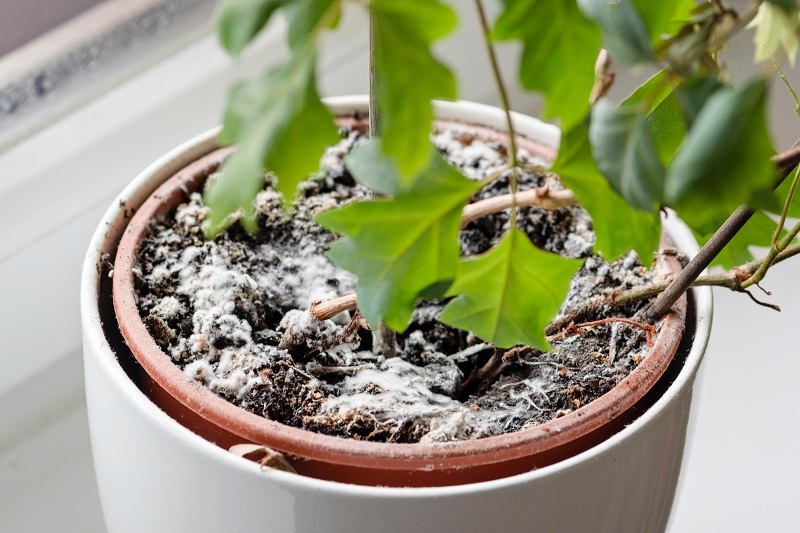
Every gardener shudders at the sight of fuzzy spots, moldy patches, or discolored leaves — signs of plant fungus. This pervasive and damaging issue can spread rapidly to all areas of your garden and may even kill the most resilient plants. Whether it is powdery mildew on your roses, black spots on your tomatoes, or root rot on your houseplants, understanding plant fungal infections is the first step in rejuvenating your garden.
In this guide, you’ll discover everything you need to know about identifying, preventing, and treating fungal infections — including treating fungal leaf spots, learning how to sterilize garden tools, making a natural fungus spray DIY, and preventing fungus in humid climates. By the end, you’ll also know how to select fungus-resistant plants that can withstand these common diseases naturally.
Plant fungus is a broad category of fungal diseases that infect plants and develop into mildew, rust, blight, or rot. These tiny organisms spread well in warm, humid, and moist conditions that prevail in home gardens and greenhouses.
Fungal spores can be easily transported by the wind, rain, insects, or even by infected garden equipment. After settling on a host plant, they start to feed on its tissues, interfering with its capacity to photosynthesize and take in nutrients.
Different types of fungal infections exhibit different symptoms; however, most fungal diseases share some similar tell-tale symptoms:
Stunted growth: Infected plants often struggle to grow, flower, or produce fruit.
Once you recognize these symptoms, it's time to take the step to treat fungal leaf spots and other infections before they spread.
In the type of treatment for fungal leaf spots, timing and consistency are crucial. Fungal infections usually start as small, discolored dots that then expand quickly, causing the leaves to yellow and/or drop to the ground. In your treatment of these infections, you need to consider:
Homemade fungus sprays are a great way to treat fungus on plants without being chemical-based, with products that you probably have on hand already.
Mix and apply to affected leaves every week. The baking soda changes the pH of the leaf, making it more difficult for the fungus to thrive.
2. Milk Spray
Milk contains natural enzymes that combat fungal spores and assist in enhancing plant immunity.
Neem oil is a natural fungicide, insecticide, and miticide, ideal for preventing several plant problems simultaneously.
The above natural sprays can be used on vegetables, flowers, and houseplants. Consistency is paramount — spray regularly for long-lasting protection.
Learning how to sterilize garden tools is important in not spreading plant fungusFungal spores can easily be transmitted from plant to plant via contaminated pruners, scissors, or pots.
Additionally, consider cleaning your tools when working on infected plants. It is important to note that cleaning allows you to eliminate fungal disease while creating a better cut with less stress to the plant.
If you live in a tropical or undeveloped coastal area, preventing fungus can be challenging due to the moist environments. Fungus spores love water, so clever prevention is necessary.
Preventative Strategies:
Presto. Prevention is always better than a cure. Regular upkeep will significantly reduce the likelihood of recurring fungal diseases.

Choosing to plant fungus-resistant plants is one of the most feasible and sustainable methods for managing fungal problems. These strains typically have a natural tolerance to diseases, which can reduce your dependency on chemical-based sprays and even your own DYI sprays.
Although resistant plants can still be infected, they recover quickly and have a better chance of resisting serious infections than plants that are considered more prone. Using resistant plants, healthy soil, and proper watering will allow you to create a naturally autonomous and healthy garden ecosystem.
To keep your garden fungus-free year-round, you will want to use prevention methods, maintain fungus-resistant plants, and conduct observations. Here are a few proven long-term strategies:
Even a healthy plant can exhibit early signs of a fungal infection. The timeliness of your response will often dictate whether the damage is slight or total.
For gardeners who have an environmental focus, biological controls provide a chemical-free option when dealing with plant fungus. Natural predators and beneficial microbes can suppress fungal growth.
These biological systems can supply a more balanced option, especially when using additional natural fungus spray DIY remedies and living with regular sanitation, where destructive fungi are less likely to thrive.
In some situations where natural remedies are not enough to control, as in the case of severe damage from fungi, which requires stifle growth, chemical fungicides can provide a means of rapid acquisition for management.
Select products based on your particular plant and the type of fungus you are dealing with.
Always read the label and use protective gloves when applying. Use alternative fungicide types to prevent fungi from becoming resistant.
Each season presents unique fungal problems:
Healthy plants, too, can fall ill if conditions are right.
Certain fungal spores can withstand UV light and can remain dormant for months in soil.
In the absence of care, it's easy for me to come back.
Knowledge and awareness of soil fungi is one of the best remedies to defend against fungal disease in plants.
Fighting plant fungus does not have to be a fight you'll always lose. Choose care, treat fungal leaf spots, keep up on tool hygiene and sterilize garden tools, try safe, natural DIY fungus spray remedies, and fend off fungal disease. Prevent fungus from even developing in warm weather climates by being intentional with watering and ventilation, and protecting your garden with fungus-resistant plants.
A healthy garden is built on the principles of consistency, observation, and attending to your garden in a timely manner. By understanding the causes and responding correctly, your plants can grow healthy and disease-free, thriving with life year-round.
This content was created by AI